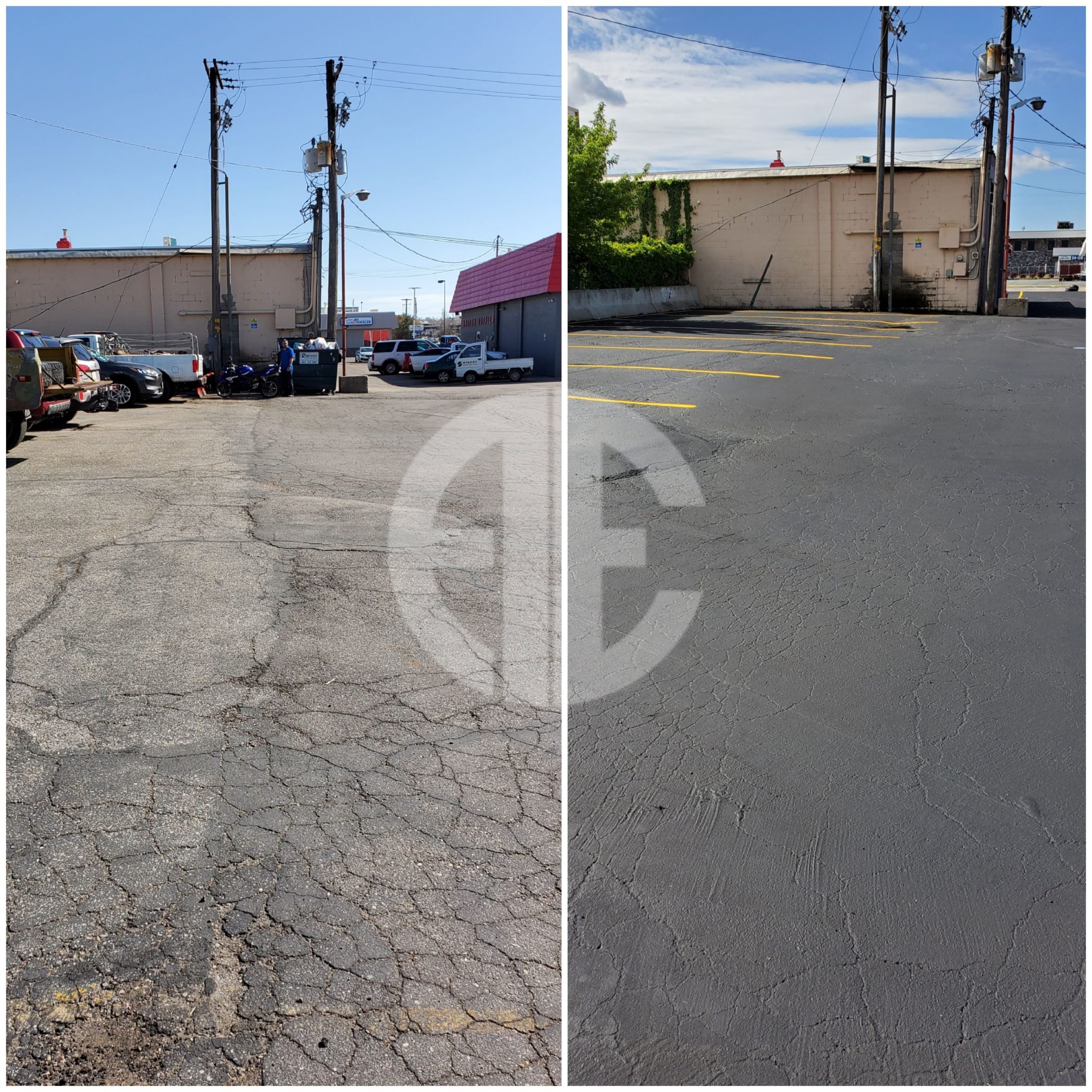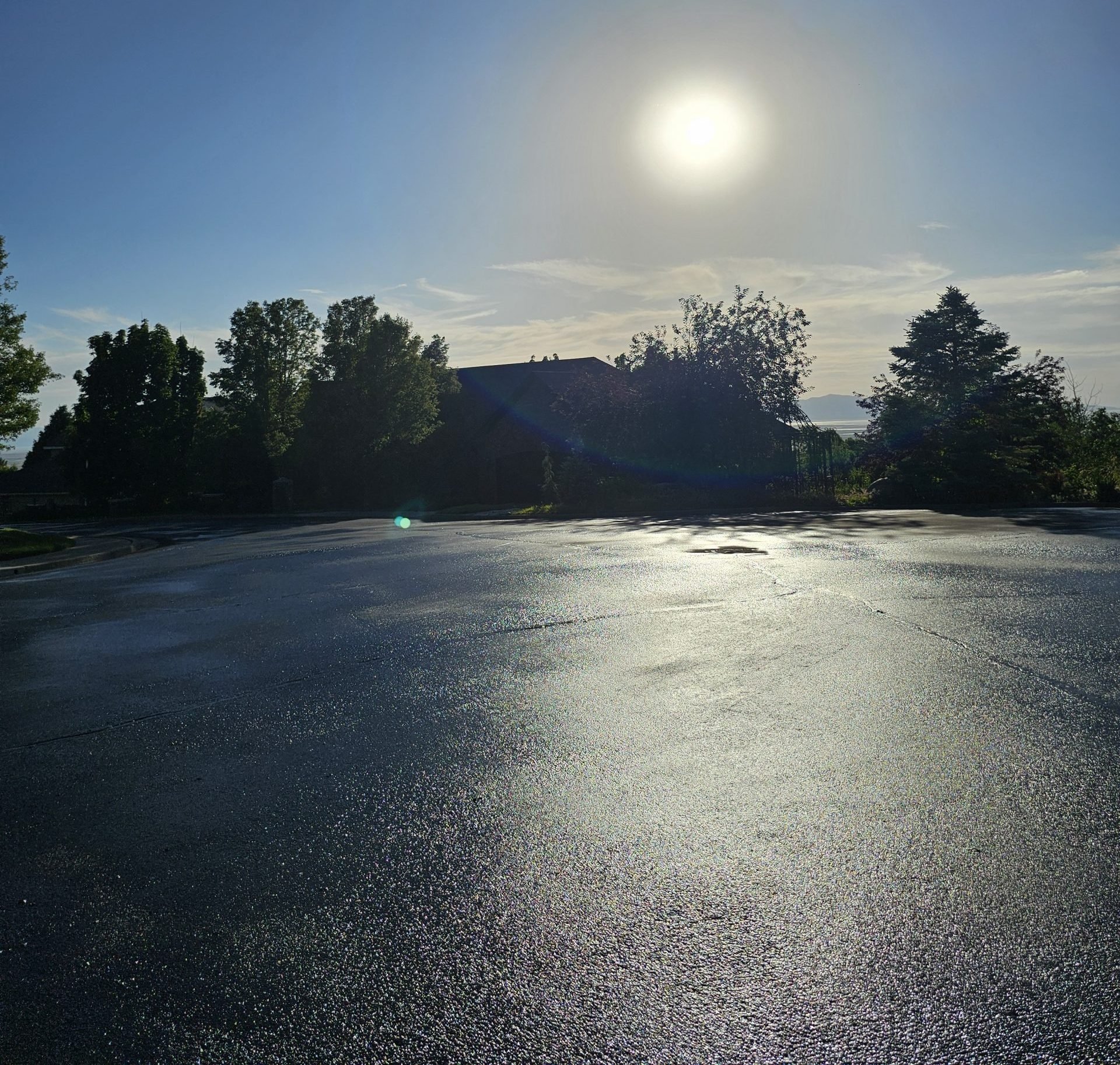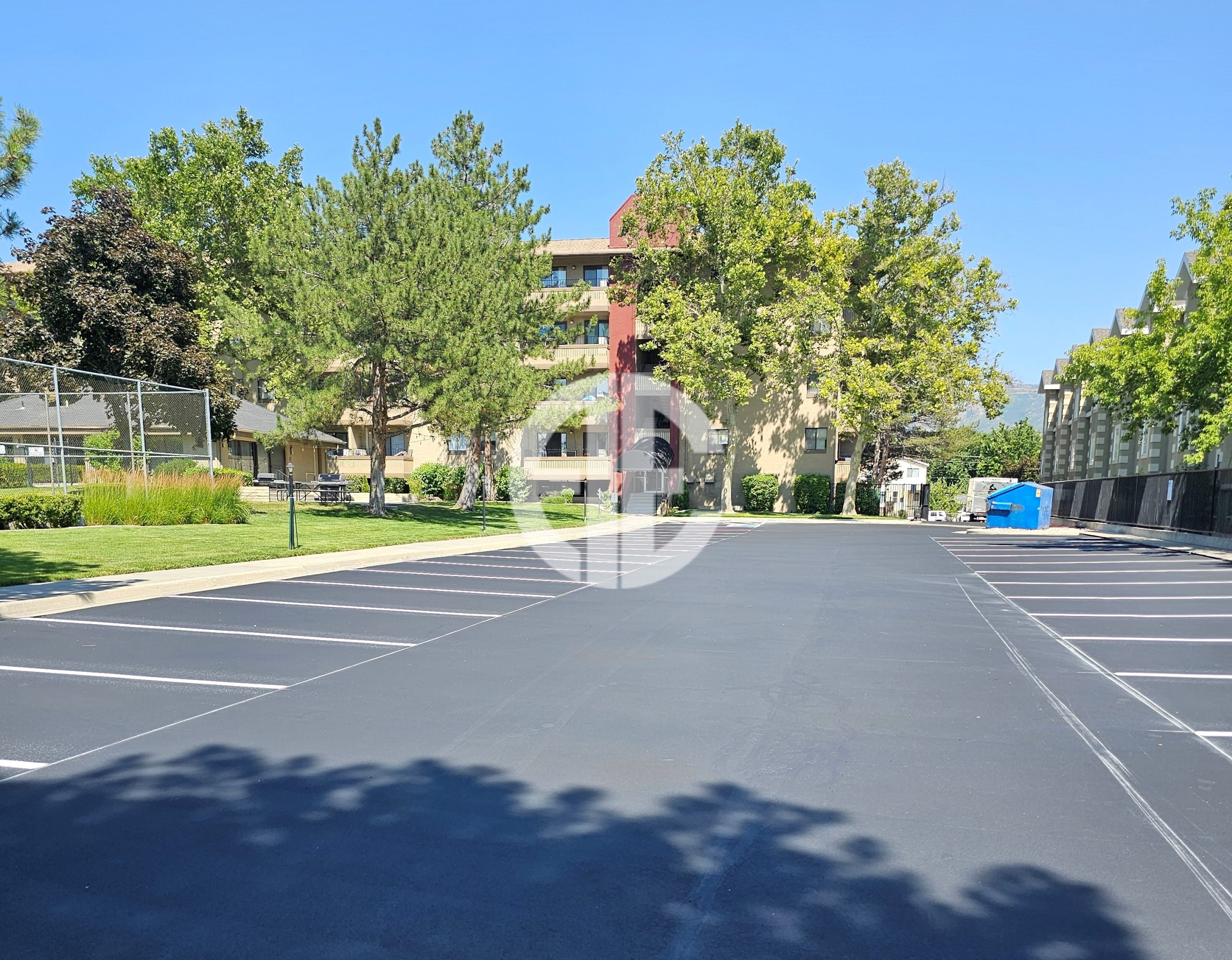Cracking is one of the most common and problematic issues in asphalt pavements. It arises from a combination of factors such as traffic loads, environmental conditions, material aging, and poor construction practices. Identifying and understanding the different types of cracks and their causes is essential in determining the right repair methods. Addressing cracks early can prevent more severe damage and significantly extend the life of the pavement. Asphalt Experts specializes in providing comprehensive solutions to address these challenges and ensure long-lasting pavement quality.
Fatigue Cracking (Alligator Cracking)
Fatigue cracking, also known as “alligator cracking,” is a result of repeated traffic loads over time. The continuous stress from traffic gradually weakens the asphalt surface, leading to a network of interconnected cracks that resemble an alligator’s skin. This type of cracking typically starts at the surface and progresses downward as the structural integrity of the pavement deteriorates. The primary causes include repeated loading stress, insufficient base or sub-base support, and poor asphalt mix design.
To repair fatigue cracking, smaller cracks can be sealed with hot-pour crack sealants to prevent water infiltration, thereby slowing down further degradation. Larger cracks may require patching, where the affected area is excavated and filled with new hot or cold mix asphalt. In severe cases, Full-Depth Reclamation (FDR) might be necessary. This process involves milling the damaged asphalt and mixing it with the underlying base material to create a new, stable base layer before repaving. Asphalt Experts recommends timely intervention to mitigate fatigue cracking and extend pavement life.
Thermal Cracking
Thermal cracking occurs due to the expansion and contraction of asphalt as it undergoes temperature fluctuations, especially in regions with extreme climates. When the asphalt binder becomes brittle during cooling or heating cycles, it can crack. These cracks typically run longitudinally and can vary in width and depth. Key causes include extreme temperature variations, aging of the asphalt binder, and poor mix design.
Repairing thermal cracks involves sealing narrow cracks with hot-pour or cold-pour sealants to prevent moisture infiltration and further cracking. Surface treatments such as applying a thin overlay or sealcoat can help reduce moisture penetration and protect against additional cracking. When thermal cracking is extensive, resurfacing with a new asphalt layer may be necessary to restore the surface’s integrity.
Block Cracking
Block cracking forms a distinctive pattern of rectangular or square-shaped cracks across the pavement surface. It is often the result of asphalt aging, oxidation, and temperature fluctuations. Although these cracks are typically shallow, they can expand and worsen if left untreated. Contributing factors include the aging of the asphalt binder, poor mix design, and temperature-induced expansion and contraction.
To address block cracking, crack sealing with a suitable product can prevent water from infiltrating the pavement and causing further damage. For more extensive cracking, applying an asphalt overlay can restore the surface and prolong pavement life. Alternatively, surface treatments like slurry seals or chip seals can fill shallow cracks and provide a protective barrier against future deterioration.
Longitudinal Cracking
Longitudinal cracks run along the length of the pavement, usually near joints or between lanes. These cracks often result from poor construction practices, joint failure, or improper compaction during the initial paving process. They can also develop due to traffic loads and temperature variations.
Sealing longitudinal cracks with appropriate crack sealants can prevent moisture from penetrating and causing additional damage. In cases where the cracking is extensive, resurfacing the pavement may be necessary to restore its surface integrity and functionality.
Transverse Cracking
Transverse cracks occur perpendicular to the direction of traffic flow and are commonly caused by thermal expansion and contraction. Other contributing factors include inadequate joint construction and poorly compacted or designed base layers. Moisture infiltration can further deteriorate the base layer, exacerbating the problem.
To repair transverse cracking, sealing the cracks with suitable materials can prevent water infiltration and limit further damage. If the cracks are significant, resurfacing may be required to restore the pavement’s structural integrity.
Reflection Cracking
Reflection cracking develops when cracks from underlying pavement layers reflect through a new surface layer. This typically occurs when older pavement with pre-existing cracks is overlaid with new asphalt. Causes include poor adhesion between layers and insufficient bonding of the new surface to the underlying layer.
Repair methods for reflection cracking include sealing the cracks to prevent moisture penetration. Installing a membrane interlayer can reduce the risk of cracks reflecting through the surface. Applying a thicker overlay or using a specialized crack-resistant mix can also mitigate reflection cracking.
Rutting Cracking
Rutting cracking manifests as grooves or depressions in the pavement’s wheel paths, caused by deformation under traffic loads. Over time, these grooves can crack, leading to further deterioration. Contributing factors include excessive traffic loading, poor compaction, and inadequate asphalt mix design.
Repairing rutting involves patching the affected areas with hot or cold mix asphalt. For more severe cases, milling the damaged section and applying a new asphalt layer can address the issue. Full-Depth Reclamation may be required for extensive rutting to restore the pavement’s structural integrity.
Shrinkage Cracking
Shrinkage cracking results from the contraction of the asphalt binder over time, usually due to oxidation and environmental factors. This type of cracking is often observed in older pavements. Causes include the aging of the asphalt binder and the gradual loss of moisture in the asphalt mix.
To repair shrinkage cracking, sealing the cracks with suitable sealants can prevent further moisture infiltration. Applying a protective sealcoat layer can also help prevent oxidation and further shrinkage, prolonging the pavement’s lifespan.
Common Problems and Solutions in Crack Repair
Water penetration is a primary concern in crack repair. Proper sealing and filling techniques are essential to prevent water from seeping into cracks and deteriorating the base and sub-grade. Another common issue is inadequate compaction during construction or repair, which can lead to further cracking. Ensuring proper compaction and using suitable mix designs and equipment can mitigate this risk. Insufficient asphalt binder is another factor contributing to premature cracking, and it’s crucial to use well-designed asphalt mixes with adequate binder content. Aging and oxidation can also accelerate cracking, and regular maintenance with sealcoating or overlays helps protect the asphalt and extend its lifespan.
The Importance of Timely Crack Repair
Crack repair is vital for maintaining the structural integrity of asphalt pavements. Untreated cracks can worsen over time, resulting in extensive damage and costly repairs. By addressing cracks early, the pavement’s lifespan can be extended, safety can be improved, and long-term maintenance costs can be reduced. Routine inspections and timely intervention are crucial for enhancing the durability and performance of asphalt pavements. Asphalt Experts emphasizes the importance of proactive asphalt crack repair to ensure a smoother, safer driving experience and to preserve the longevity of pavement structures.
Trust Asphalt Experts – Your Partner for Asphalt Care Excellence in Utah








 Clearfield
Clearfield